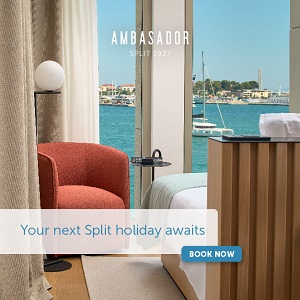Where To Stay In Split (1): Choose Neighbourhood By Your Needs
There are hundreds, even thousands of options where to stay in Split, a variety of hotels, hostels and especially rooms and apartments, and the choice is seemingly endless. However, when it comes to the final decision, when you narrow your selection on Booking.com or Airbnb.com or any other site, one of the main questions is "which neighbourhood to choose". Especially for first time visitors, most of them are complete terra incognita, not to mention sometimes truly unpronouncable names.
Like in any other city, every neighbourhood in Split has its pros and cons, its ups and downs, and reasons why or why not to hang around. In this new Total Split series we will try to give you hints what does it mean when some apartment owner gives you information that they are in Varos, Get, Marjan, Poljud, Bacvice, Radunica... All these parts of Split have their history, their unique atmosphere, different accessibility, or, in short, important reasons for and against. Each one of them will offer you different oportunities for nightlife, a quiet vacation, enjoying history or good food, or to be closer to nature.
For starters, it's good to know that since last year almost whole Split is included in Street View on Google Maps. This way anyone can browse around pretty much any properties offered on booking sites.
To be continued
Conde Nast Things to Do Before You Die: Eat Oysters in Croatia!
Most of us can make lists all day long, but we don’t always accomplish all the things that were important enough to make the list in the first place. One particular list many of us make is of the things we want to do or places we want to see before we die also called our bucket list. So in case you haven’t made your own yet Conde Nast Traveler went ahead and made one for you. They focused on just one continent and narrowed down the 50 Things to Do in Europe Before You Die.
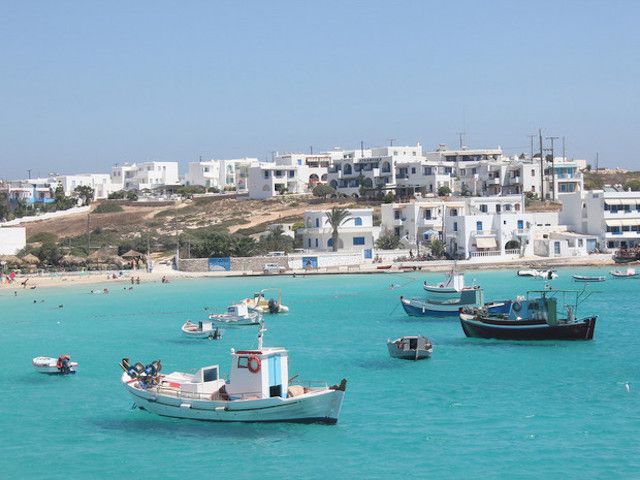
Croatia made the cut and came in at lucky #7 among it's European powerhouse neighbors such as; Amsterdam, Italy, Ireland, Spain, France, Greece, the UK and many more. Their top travel experts agree that everyone’s bucket list should include eating oysters in Croatia. More specifically from the bay of Mali Ston where they’ve been harvested since Roman times and their delicate flavor praised for centuries. Another insider tip is to wash them down with a glass of posip or white wine.

Other suggestions on the list were; skinny dipping in Sweden, sleeping in a car in Stuttgart or a castle in Scotland, taking a black taxi tour of Belfast, a train over a bridge connecting Sweden and Denmark or a carriage ride through Krakow. In Europe, traveler’s can also taste truffles in Italy, visit the highest beer garden in Germany or a viking community in Roskilde, attend a fire festival in Spain, a summer music festival in Serbia or the Balshoi Ballet in Moscow.
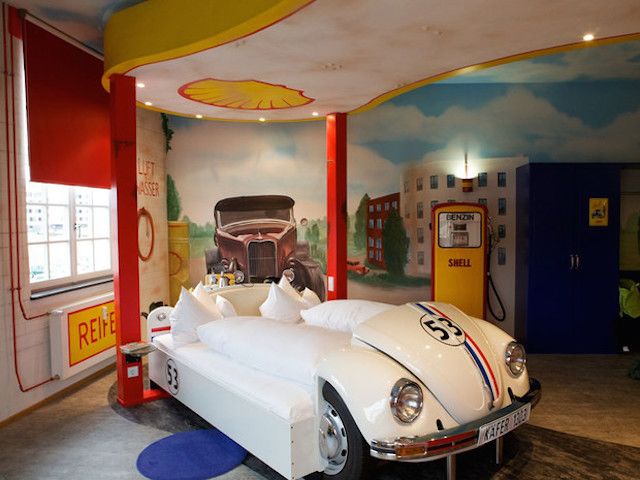
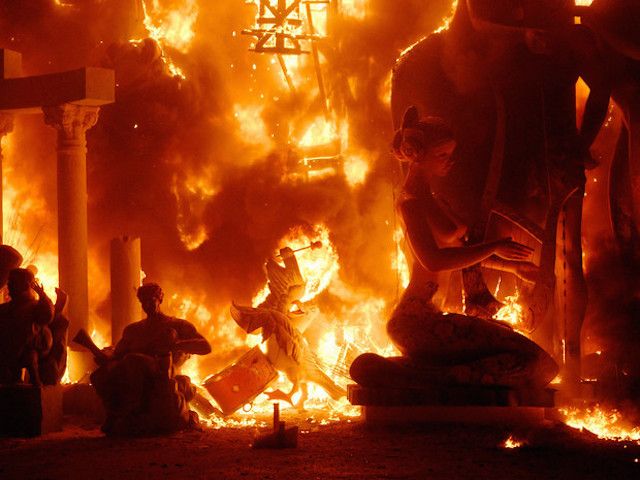
Besides eating oysters from Ston, I’ve managed to make a small dent in their list by marveling at the David in Florence, La Sagrada Familia in Barcelona and impressive Swiss Alps as well as getting lost in the louvre in Paris, on the tourist trail in Bruges and on the colorful streets of Lisbon. I’ve also been fortunate enough to enjoy flamenco in Spain, the Opera in Vienna, gelato in Rome, a beer or two in Prague, a cocktail under the Eiffel Tower and most recently took a thermal bath in Budapest on my birthday, but there’s still so much more!
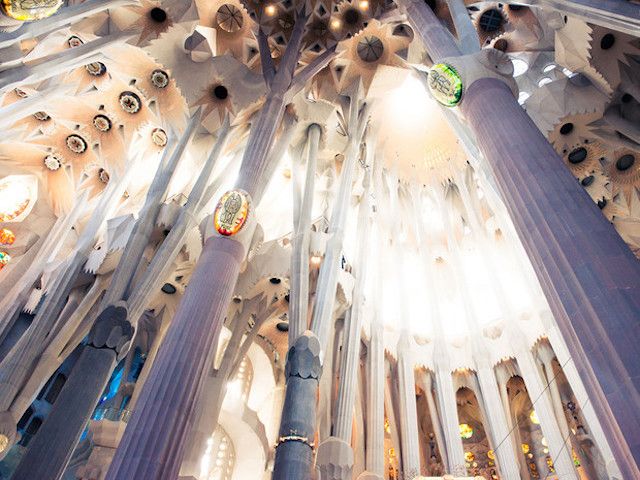
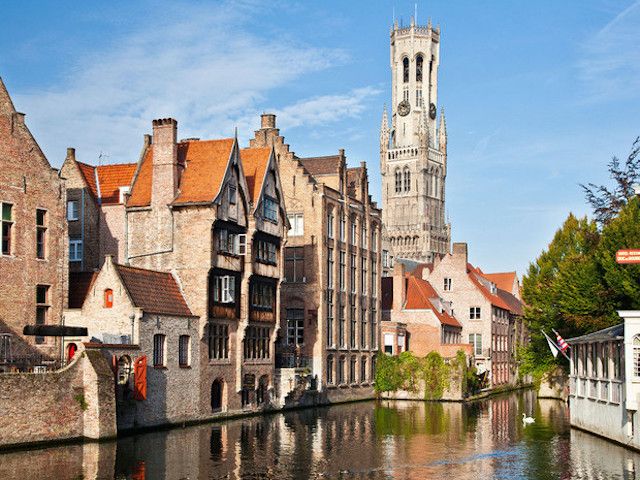
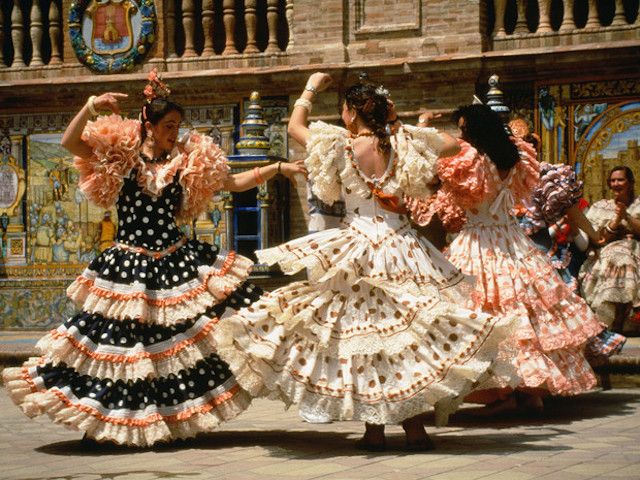
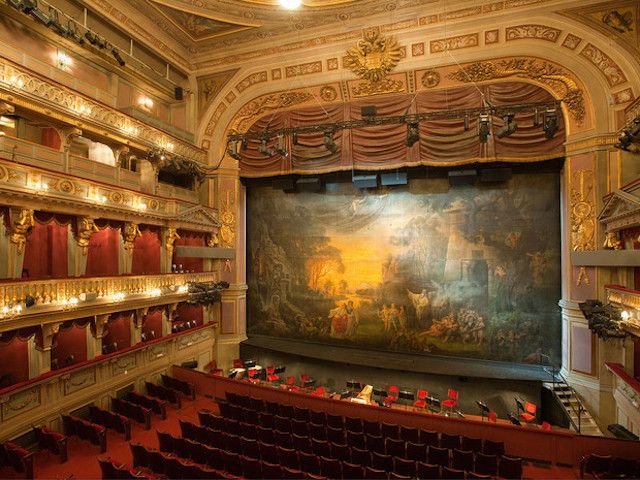
At the top of my Conde Nast Traveler to-do-list; the northern lights in Iceland, Giant’s Causeway in Ireland, Acropolis in Athens, canals in Amsterdam, shopping the Grand Bazaar in Istanbul, sailing the Greek Isles, walking the Berlin Wall, tasting afternoon tea in London and trekking to Sages, Portugal; the end of the European continent.




As we can see, Europe and the world is our delicious oyster, but take it from the pros and don't leave eating them in Croatia off of your bucket list!
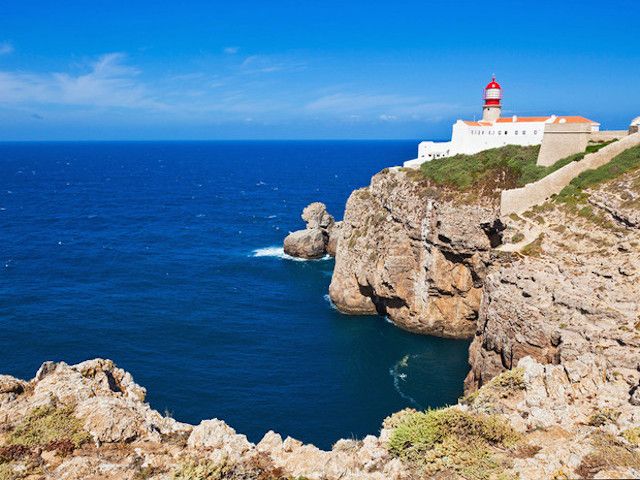
Photos: Conde Nast Traveler
Summer Is Coming: Top Five Beaches In Split
When we look through the window, it seems like it's a long time till the swimming season. However, it will come faster than we think. Knowing that most of the people are already booking accommodation, it's never too early for the top 5 beaches in Split list. All five of them are available on this map. This is not the list of all the beaches locals love for some particular reason, but of those which can provide something more than just sun and sea. Besides, there are always some places which are well kept secrets.
1 Trstenik beach
Last summer we brought a verdict about this beach as the best kept in Split. And it is, really. This beach is not natural, but smooth pebbles make it very pleasant. Beach is well equipped with sunbeds and parasols, but in the same time not over-crowded with them, so there is plenty of space for simple spreading of your towel. Also, there is a VIP platform operated by Radisson Blu hotel. Sea is, like at most places in Split, crystal clear, and when you had enough of sun and sea, there are plenty of bars around.
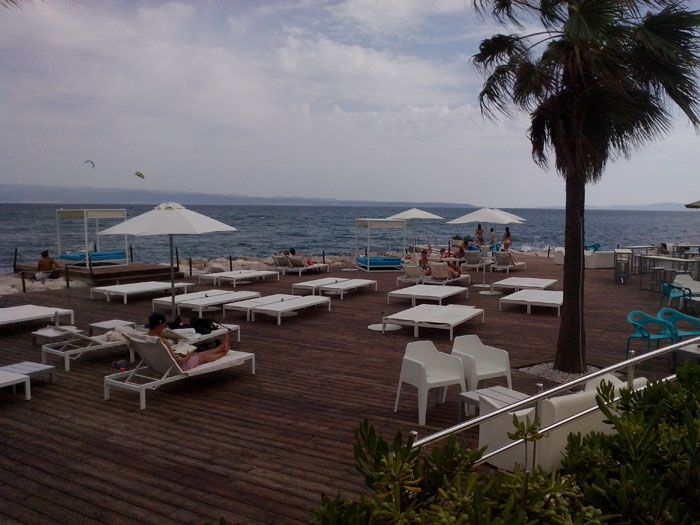
2 Bačvice
For anyone looking for some privacy, Bačvice will be the last choice. On the other hand, it's a central city beach, where many locals are coming, and thus very popular among younger tourists looking for some more authentic experience. Bačvice is a home of picigin, probably the only beach game protected as the cultural heritage. Rental of sunbeds and parasols is available, bars are all over the place, and proximity to a city centre makes it extremely popular. Also, two summer DJ parties are taking place there, and clubs at the beach provide wild and loud nightlife. Surprisingly for such crowded beach, water is very clear, especially in the morning.

3 Kašjuni
First, basics: it's pronounced "kahshyounee". Difficult, but possible. Second, the biggest value of this beach is its position. It would be hard to find similar beach, so close to a city of 200,000 people, with such enchanting view while swimming. Get in the water, look up, and you will see Marjan hill in its full beauty. Water is fine, but there could be some more of usual beach amenities. However, for those looking for different experience, very close is the only - semi-official - nude beach in Split.

4 Kaštelet
This is another beach on Marjan hill shores, mostly populated with younger crowd. In the past, there were even more bars and clubs around, even open-air concerts, now there are two bars close enough to the water so you won't need to suffer of being thirsty. It's easily accessible from the city, even on foot, with pleasant walk by the sea. Also, there are public buses going there.

5 Bene
Again, Marjan. This beach is part of recreational centre in the pine forest at the western part of the park hill, with several tennis courts, football field, and even open-air gym. You can reach it by bus, but also walk through the woods, or rent a bike and go there like most locals do. Water is not as clear like on other beaches in this selection, but mostly because of the sandy sea-bed, not because it's polluted in any way. There is a bar and a restaurant right next to the beach, and in case you like some privacy, area around Bene - named after church of Saint Benedict that once stood there - is full of solitary spots.

To find out more about Split, CLICK HERE.
Worshiping For Non-Catholics In Split
Christianity is one of the foundations of Split, and its many churches can witness how faith was important in city's history. However, what to do if you are religious, but not Catholic? Or not a Christian? Where to worship? Here is the brief guide, in alphabetic order.
One of the rare non-Catholic Christian denominations that managed to build their own faith center, on a very good and accessible location. Every Saturday there is a Bible studying at 10 am, and sermon on 11.15. Plus, every Wednesday at 6 pm, they have meetings of Bible Friends Club.
Thanks to activities by pastor Dražen Radman, this small church community is very well present in local community. They have sermons every Sunday at 10 am, and prayer meetings on Wednesdays at 8 pm. For English speakers translation during sermon is provided.
Evangelical Lutheran Church Split
Officially, it's based in Split, but its site is actually in Šibenik. However, they have activities in Split. Since web site is in Croatian only, maybe it's the best to contact them to check, e-mail address is This email address is being protected from spambots. You need JavaScript enabled to view it..
Another small religious community, with a praying site, you can find it here. For more info on activities, phone them on + 385 (0)21 569 766.
Another big and important community in Split, and city's history and social life. Unfortunately, there is no mosque in Split, but to all faithfull a praying site, or mesjid, is available in the city's center. Beside all religious services, there you can also learn about where to buy, or where to eat by hallal principles. In Split, only Turkish restaurant Istah has this certificate.
Jews left incredibly important mark in Split history, and some of the most important city landmarks are connected with their community, like 16th century synagogue, old Jewish cemetery, or Morpurgo bookstore, the third oldest in Europe. Unfortunately, Split doesn't have a rabbi, but it's possible to worship in the synagogue. Of course, Community's excellent web site will give you a detailed insight into a role Jews played and still play in Split.
This center is consisted of temple and a bookstore, and offers a place for meditation. Often are different events, like lectures about Buddhism foundations, and principles. As they say on their web site, it's open to anyone, you don't need to be a Buddhist to participate in Center's activities.
Recently, we wrote about unfinished Serbian Orthodox church of Saint Sava, but this community has a small place of worship, right next to this site. There they hold all services like in any Serbian Orthodox church, in spite of spatial problems. Serbs are the biggest ethnic minority in Croatia, and thus their national church plays an important role in their social life.
This email address is being protected from spambots. You need JavaScript enabled to view it.
Top 10 Things To Do In Split For Free
Split is a tourist city, and as such mostly profit-oriented, especially during the summer season. Still, there are ways to enjoy it for free. This is our selection of freebies, maybe someone else would include some others. Here are alphabetically ordered suggestions.
Beaches
Main rule is this: there are no private beaches in Split, except partly the one in front of Radisson Blu hotel, and the one in Le Meridien Lav Hotel. There are those under concession, where it's possible to rent a seabed and/or parasol. But, if you want to lay down your towel, you can do it wherever you want. And have in mind that Split has about 15 kilometers of seashore line, and most of it - except city port - is suitable for swimming.
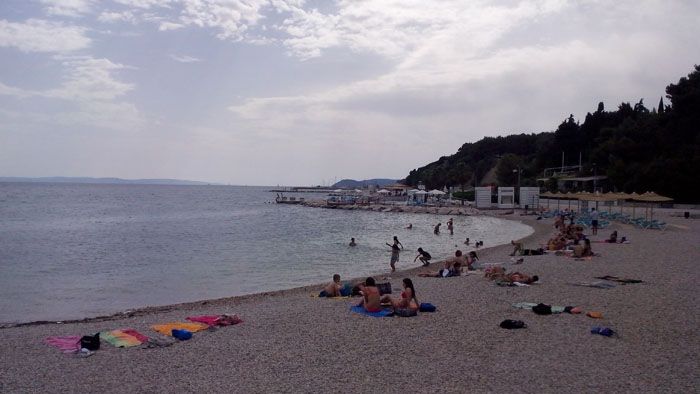
Churches
Unlike some other cities with similar historical heritage, pretty much all churches in Split have free admittance, no matter how precious are some artifacts inside. The only exception is the Cathedral of Saint Domnius, where it's required to buy a ticket for sightseeing of the church itself, treasure and the bell tower. Of course, entrance is free on holly mass, but it's required to respect the service and worshipers. Beside cathedral, our favourite churches are Saint Francis, tiny Saint Martin, and legend-filled Saint Anthony monastery.
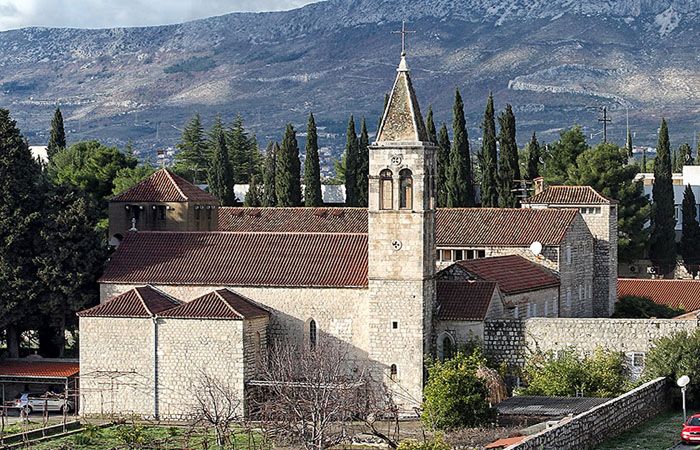
Diocletian's Palace
Centerpiece of Split is its biggest landmark, ancient Diocletian's Palace, not only the foundation of the city, but city itself. Many tourists arriving to Split believe they will find actual palace, a building remained from the Roman times. Of course, it's not so. Browse around the Palace, and enjoy it's hidden corners, tiny squares, alleys and witness centuries-long life within its walls. That's probably the best way to sense the pulse of the city.
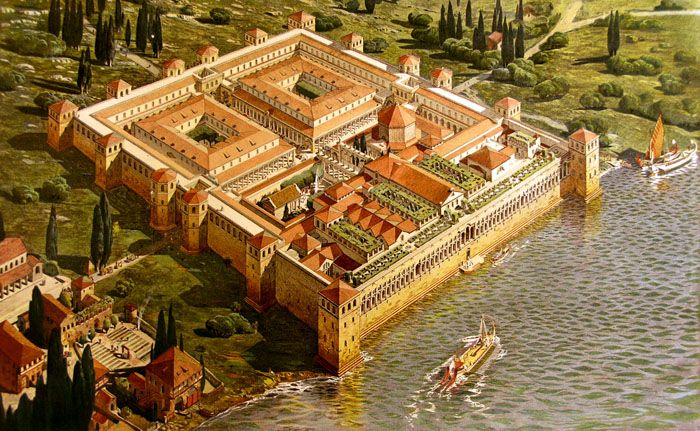
Diocletian's Salute
For some, it can be pure tourist-oriented kitsch, or just a bait for those interested only in commercial interpretation of history. However, during the season every day at noon Peristil is packed full with tourist expecting to see actors playing roles of emperor Diocletian, his wife Prisca and imperial guard and saluting visitors to the Palace. And it's fun, check out this video.
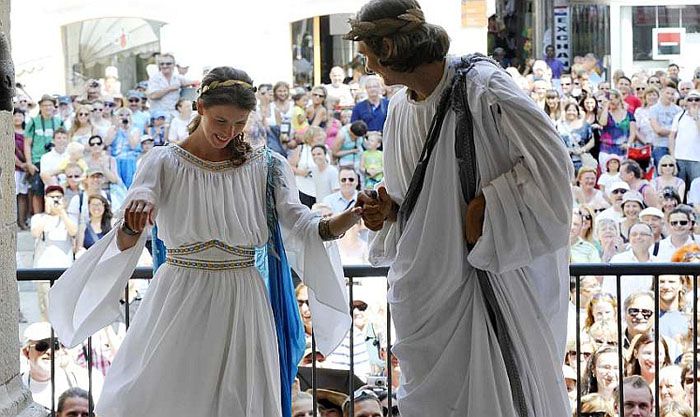
Galleries
All Split museums require paid admission, with different discount rules, but in the same time all art galleries and temporary exhibitions are free of charge. That's the case even when such exhibitions are placed in museum venues. There are several very busy, and attractive galleries, like Milesi Palace, Salon Galic, Photography Gallery, Gallery of the Fine Arts, Gallery Kula, Gallery of Split City Museum, etc. Especially during the Split Summer Festival, there are lots of interesting exhibitions around the city.
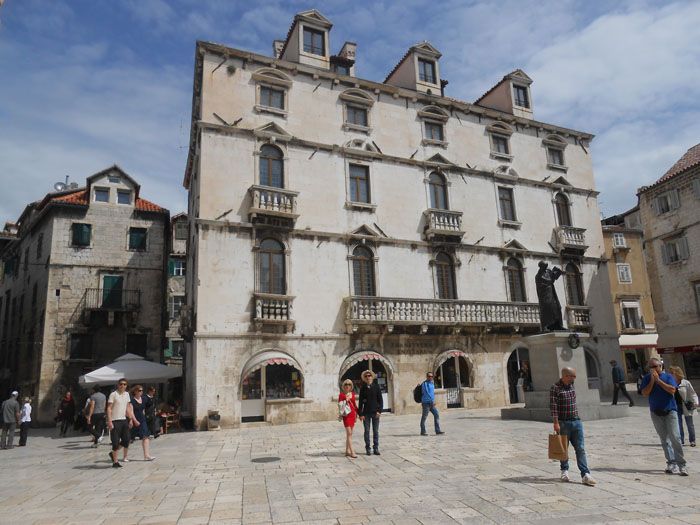
Green and fish market
Word market means that something is on sale there, but nobody will twist your arm if you just browse around the stalls on picturesque Split Green Market (locally "pazar") and 120 years old Fish Market (locally "peškarija"). Every morning dozens of sellers offer everything good of food Dalmatia has to offer, and some of those from beyond local area. Of course, buying some fresh fruit, vegetables or seafood is an investment into your health, so consider this free medical advice.

Marjan - hiking, walking, jogging, cycling, swimming, worshiping
That green hill overlooking Split is one of its main symbols, but also its biggest recreational area. There are no many cities with such diversed piece of nature almost in the city center. Unless you rent a bike, everything you want to do on Marjan is free of any charge, but not free of careful behaving, according to the natural and historical treasures it offers. As an introduction and collection of advices, check our series on Marjan (links to previous chapters are at the end of the article).
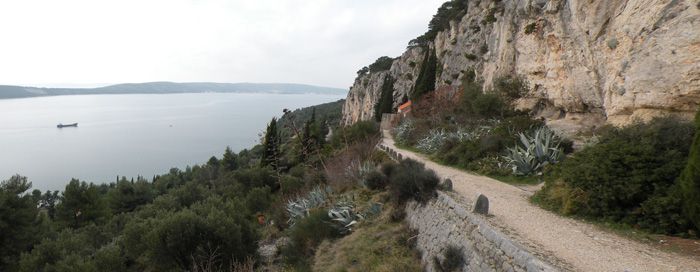
Mingling at Matejuška
There are many popular bars and clubs in Split, but there is also Matejuška. This old fishermen's cove is one of the busiest night-gathering places, where young tourists can meet their local counterparts, and just make friends with them, and chat while sitting on a long wall in the middle of the city port. In case you still need a drink, there are several stores around where you can buy a beer or three, much cheaper than in bars, and just enjoy in sipping it open-air.
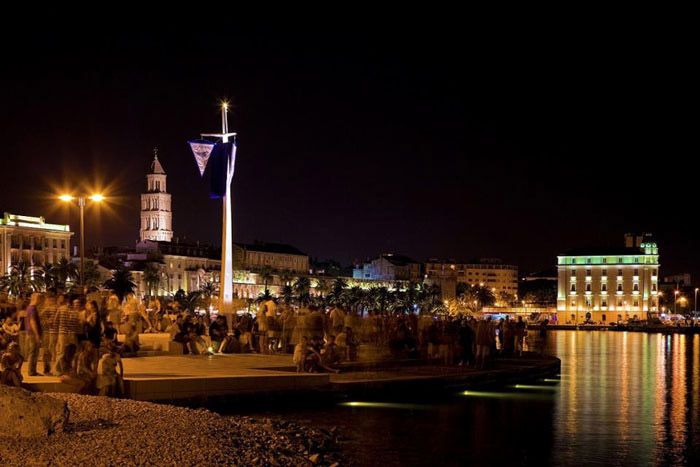
Seaside promenading
Paris has its Seine, Florence has Arno, Cannes has Croisette, and Split has Riva. Excellent choice for evening stroll, before or after the dinner, for enjoying sunset and observing people around you. Promenade doesn't include only main Riva, in front of the Diocletian's Palace, but also newly renovated Western Riva and whole strip from ACI marina to Bačvice beach.
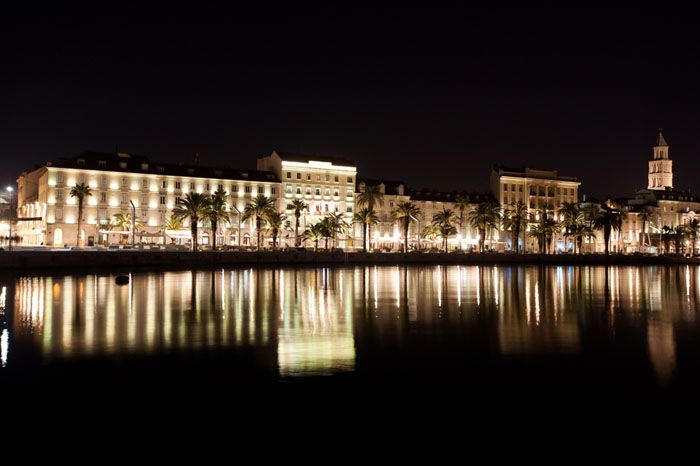
Self-service sightseeing
There are dozens of travel agencies in Split, and maybe even more guidance services. However, those more adventurous self-learning leaning visitors can decide to have a sightseeing tour by themselves, like we recently described here. It's easy, and it's - of course - free. Just follow City light panels around the city center, and all the way to Marjan viewing point, there are 16 of them, map is available here. Good additional assistance can be found in two Tourist Board's Information Centers placed on Riva and Peristil.
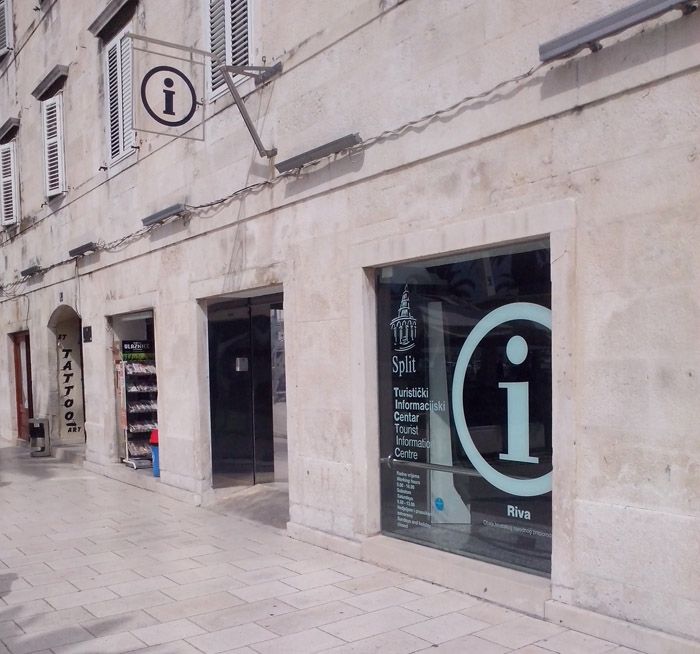
Split Palaces In And Around The Palace
When someone mention the word Palace in Split, association is more than obvious, Diocletian's Palace. It's the main city landmark, and actually the city itself, because of the life that's going on within its walls for 17 centuries.
However, through rich and turbulent history of Split many noble families and distinguished citizens built their residences in what we today know and cherish as the historical centre. Since they were built, some of them were turned into museums, like Split City Museum in Papalic Palace, or Emanuel Vidovic Gallery in Andric house. Others were converted into shops , even supermarkets like the Small Papalic Palace, or restaurants, or bars in Karepic, Cipci and Marulic palaces. One of the most beautiful, Ciprianis, now hosts one political part, unfortunately not very interested for meaning of that house in Split history. And yes, there are luxury apartments in some of them, like in Grisogono and Deskovic. Unfortunately, there are also those which are neglected and deserted, inhabited, for example Albert.
What is important, though, is that all of them are excellent examples of architecture styles over centuries in Split. It's also nice alternative way for Split sightseeing which will bring you excellent insight into historical layers that city is made of. While walking from one to another, you can see all other important landmarks, and info plaques will tell you all you need to know about each one of these palaces. Just follow our map available here and watch for buildings from our photos.
Andric house

Alberti Palace

Augubio Palace

Bajamonti-Deskovic Palace

Cambi Palace

Cindro Palace

Cipci Palace

Dragisic (De Caris) Geremia
Dragisic (De Caris) Palace

Grisogono Palace

Karepic Palace

Palace at the Golden Gate

Palace at the Iron Gate

Marulic Palace

Milesi Palace
Palace at Dosud

Nakic Palace

Small Papalic Palace

Big Papalic Palace

Pavlovic Palace

Skocibusic Palace

Tartaglia Palace
Is Saint Martin The Narrowest Church You Have Ever Seen?
Maybe the most often sentence beginning you can hear in Split, when listening some local explaining beauties of his or her city by far is "This is the most...". And than goes "beautiful", "oldest", "famous", just pick one. For example, Split cathedral of Saint Domnius is probably the oldest building serving as a cathedral, since it's actually converted mausoleum of Roman emperor Diocletian.
But there is one hidden gem that can be the other extreme in this race for greatness. Just above the northern gate of the Diocletian's palace, called Golden Gate, in what once was the Roman guardhouse, there is probably the narrowest church you have ever seen. It's called Saint Martin, and is only 1.64 meters wide and 10 meters long, settled within the Palace's northern wall. The only trace of this church from the outside, apart from stairs leading to it through old Dominican monastery, are miniature windows visible from the inner yard of the Golden Gate, hidden in once bigger niches, now covered with bricks.
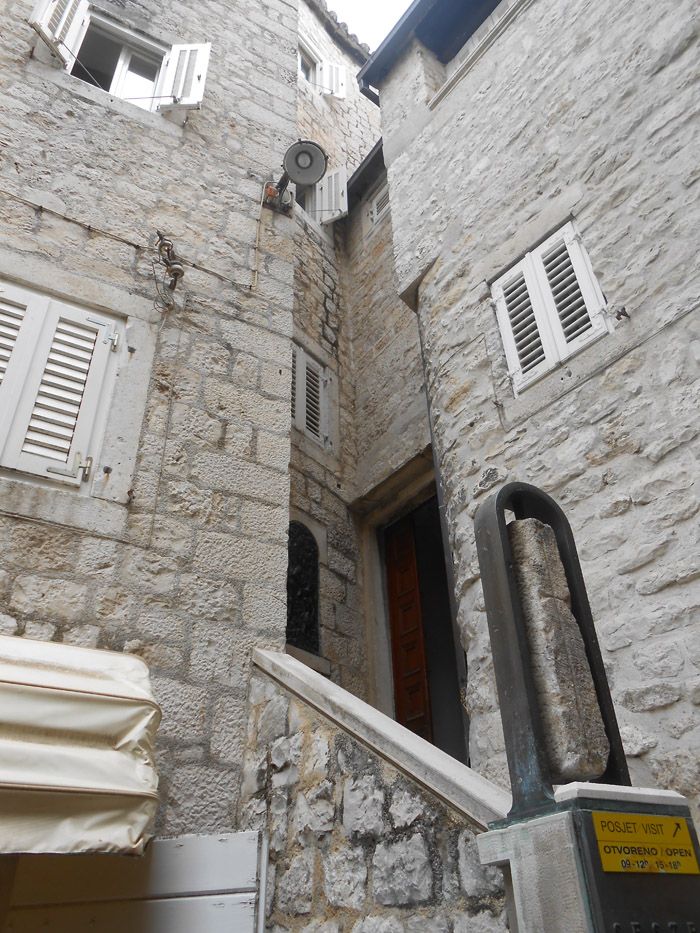
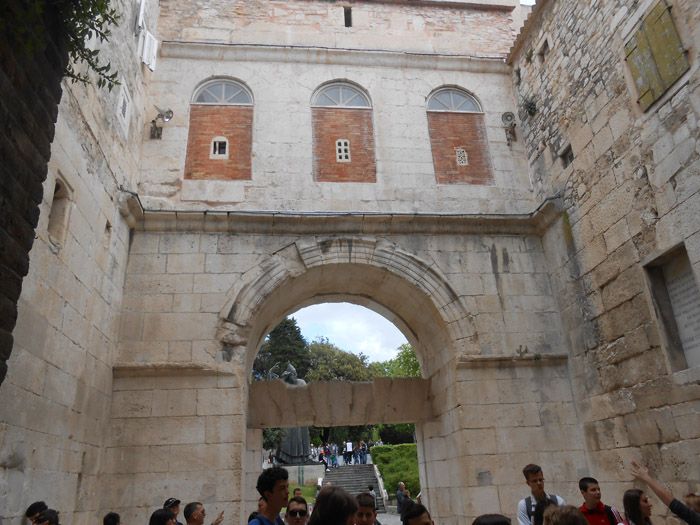
And Saint Martin's importance very much exceeds its size. It was built in the ninth century, during reign of old Croatian duke Trpimir, and actually it was the first Christian church to be built within the Diocletian's Palace. Beside Saint Martin, church was originaly dedicated to the Virgin Mary, and pope Gregory. From that age dates the most important piece in the church, a 9th century architrave with carved names of Trpimir's chaplains Dominic and Martin.
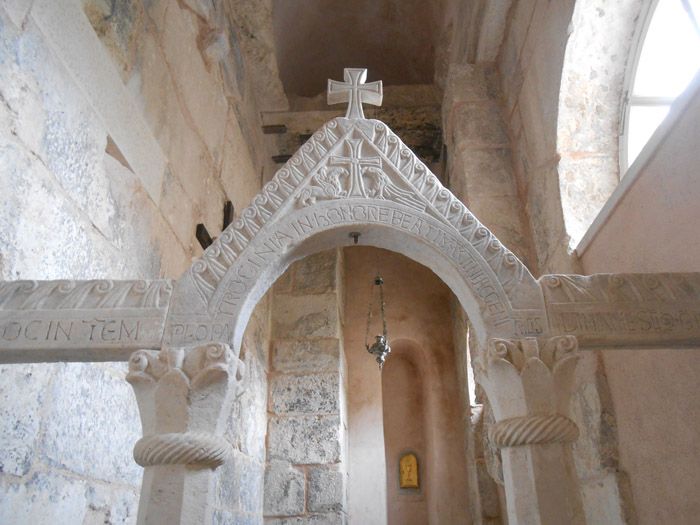
After monastery was abandoned due to a medieval black death epidemic, church was forgoten for centuries, until in late 1800s founder of Croatian archeology father Frane Bulić rediscovered it and lead its reconstruction. During excavations he even discovered a grave of Saint Martin's builder, chaplain Dominic.
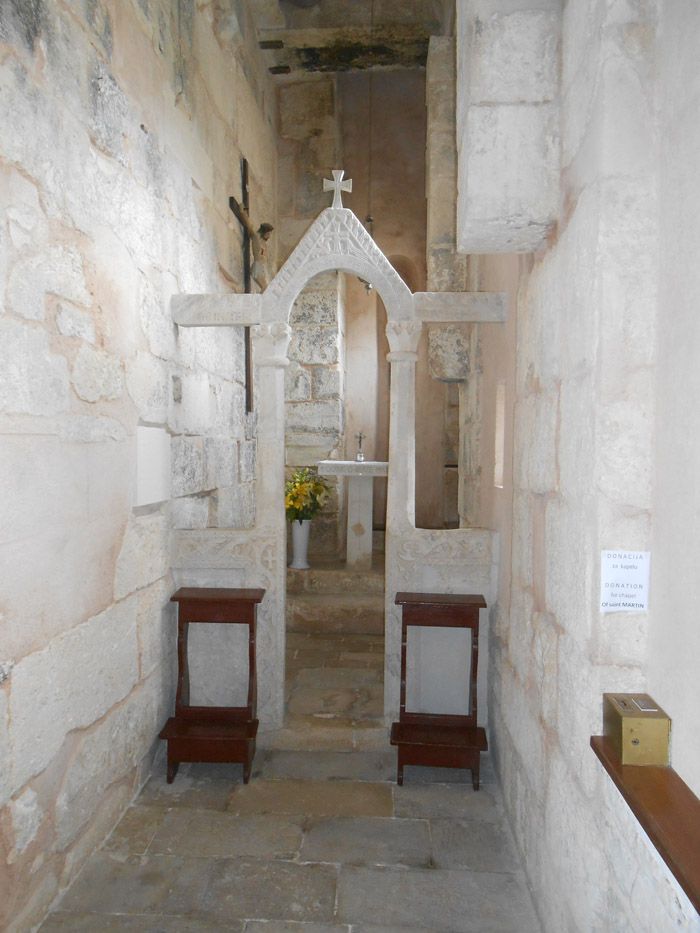
Even many locals don't know about this church, and visit offers really one of a kind view to the monument of Gregory of Nin, or to cathedral's bell tower on the other side. And all this visible just if you turn from one side to another, within barely two steps. Of course, being inside the ancient Roman palace's walls is unprecendent.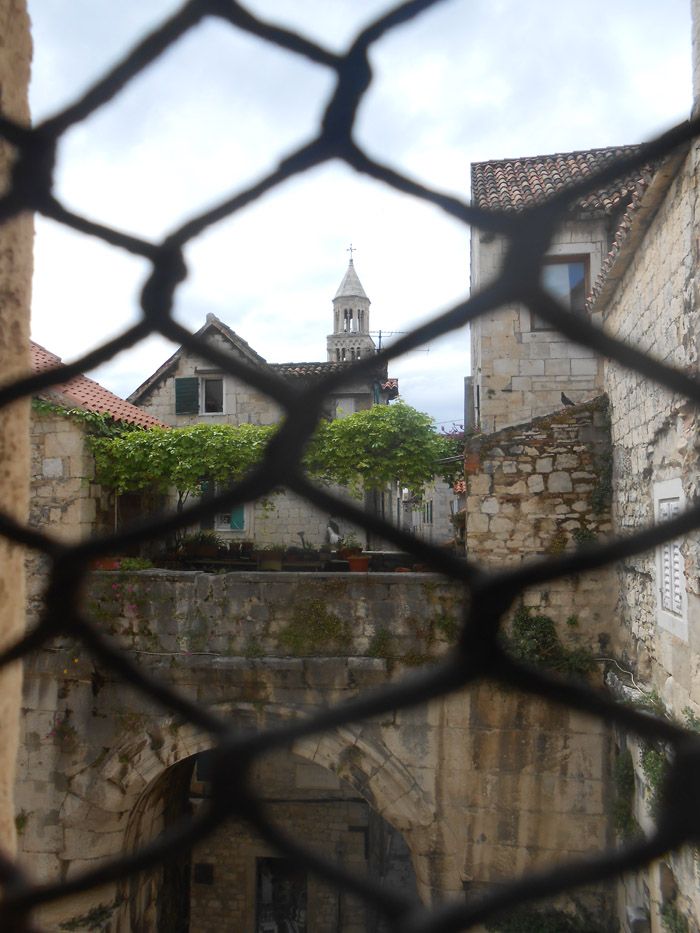
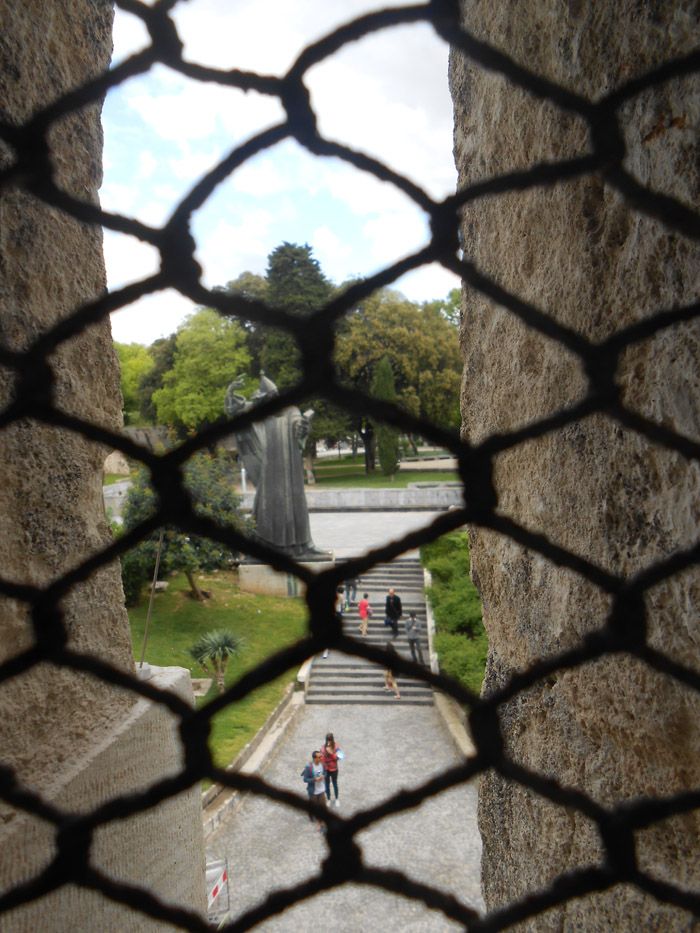
Pipi: Split’s Cult Drink
Split has its very own soft drink called Pipi produced by Dalmacijavino. Pipi is Split’s version of Fanta and Miranda and is very much loved by the Splićani. Pipi is a cheery carbonated orange drink that most will remember drinking as THE drink of the 80s and 90s and today is the drink of nostalgia that brings you back to your youth.
See Dalmacijavino’s legendary Pipi commercial from the 1980’s featuring Ana Sasso, ex-Miss Yugoslavia, on Split’s famed Bačvice beach.
It’s difficult to put into words the importance of Pipi in Split culture but with the newest summer hit, “Pipi” by local Studio Frendo, you’ll get the drill. It’s all about drinking Pipi on the beach this summer.
Dalmacijavino is going through tough times and in return heavily reduced their production of Pipi, causing anger amongst locals. Getting a bottle of Pipi almost became a collector’s item, as if buying a special vintage wine. Coming to a café, you would whisper to the waiter “Do you have Pipi?”…and if you were lucky, he would sacrifice one of his last bottles on you.
Dalmacijavino, who is currently under bankruptcy protection, have realized the importance of Pipi and rely on this brand to get the company back on its feet again. Therefore, Dalmacijavino have started producing Pipi again are opening flagship stores in various Split neighbourhood and in other important Dalmatian locations. Their Pipi branded store not only sell Pipi, but other Dalmacijavino products, mainly wines by the liter.
Currenly, you will find Pipi stores at the bottom of Križeva near Prokurative, Šibenska 3 in the Kman neighborhood, and on P.I. Čajkovskog near the old Hajduk stadium (Stari Plac). More stores are due to open in the Blatina and Skalica neighbourhoods as well as in Sinj, Drniš, Solin, Kaštela, Jelsa, Stari Grad, and Hvar Town. The most wellknown Pipi-stand is by the Dalmacijavino factory in the Port of Split, adjacent to the ferry terminal.
Briškula, Trešeta, Karambol, Balota, Picigin…Dalmatian Pastimes
Along the Dalmatian coast and on the islands are quite a few activities that everyone shares. Some of the games stems from Italy or France while others are indigenous to Split. Nonetheless, they play an important role in Split culture and its identity; it brings people together for social game, whether outdoors or around a table.
Balota is a game you will often see played all over Dalmatia as well as in Italy and France. Balota is known as Bocce in Italy or Boules in France. The game involves two teams throwing heavy balls as close to a marker ball (known as bulin in Dalmatian or cochonnet in French) as possible on a pitch of about 4 meters wide and 15 meters long. These pitches can be found outdoors all over Dalmatia in city parks and in small coastal villages. The pitches are usually public and are therefore free to use. It’s such a charming site to see elderly men and women who gather for a game and a chat. You will often see overcrowding around the pitches and loud conversation in the making.
Karambol
Karambol is the billiard version of Balota played in Dalmatia. A Karambol table is similar to a billiard table but has no holes or pockets. Players roll the ball with their hand and without a cue. Again, like Balota, teams have to get as close to the Bulin as possible but first they need to kit two sides of the table first. See here the Karambol rules made easy in Split’s underground café, Zanat, which is where the game is more popularly played.
Briškula and Trešeta are popular card games played in Dalmatia, particularly in Split. The game, originally from Trieste in Italy uses Italian cards, and not the regular decks you would find in a casino or anywhere else in the world. An Italian deck has 40 cards of four suits; coins (Denari), swords (Spade), cups (Coppe) and clubs (Bastoni). Briškula is the simplest and most popular (Briscola in Italian) and is played in the normal Italian fashion though there is also a popular variation called briškula Dalmatian style or briškula na duplo (double briškula). Usually, after completing a round of Briškula, thenTrešeta is played. Trešeta (Tresette in Italian) works on a point system where the winner is the firs to achieve 41 points where akuža scores highest; having three or three aces or three highest ranked cards. If the Trešeta round results in a tie, another round of Briškula needs to be played in order to determine the winner.If you want to learn how to play Briškula and Trešeta, Wikipedia explain the rules of Briscola and Tresette where the Dalmatian variations are explained. If you want to experience a real local vibe where the game is being played, you head to Zanat in Split; an off-the-beaten-path café in the palace where youth come to play the game. Zanat has a tendency to close when its too warm outside but try and find this watering hole anyway by begging a local to reveal its location. Hint: it’s in a side street between Peristil and Pjaca.
Picigin is an amateur sport played in the shallow waters of Bačvice consisting of players tossing a small ball to one another, keeping it from touching the water. Quite rare for these parts, Split’s Bačvice is a sandy beach with quite shallow waters, which spurred the birth of Split’s very own sport. It is not a competitive sport as there are no winners, points or opposing sides, but rather a relaxing way for friends to relax and exercise. As the game grows with intensity, passing tourists are treated to the spectacle of grown men flying in the air in an often vain attempt to keep a small ball in the air and if you ask the women what the best part of the game is, it is that the male contestants are expected to wear mudantine, a tight speedo. The Picigin World Championships were introduced in 2005 and, as the sport is non-competitive, it was decided to determine the champions on a combination of number of touches and acrobatic style. Also, it is a tradition to keep the ball out of the water on New Year's Day, whatever the weather.
Here is a little Picigin clip:
Matejuška: An Open-Air Hangout in Split
Matejuška is a small fisherman’s port just west of Riva. A pleasant walk along Matejuška provides the best vantage point of Split’s seafaring culture as locals from the Veli Varoš neighborhood prepare their catch along the long pier in the morning and catch up for a chat on the benches. At the end of the pier is a wind compass sculpture showing the winds of the region. In the last century, this port was a shipyard.
Matejuška has developed a cult status amongst youth and is probably the biggest open-air hangout in Dalmatia for almost all subcultures of society; hipsters, punk rockers, rock n’ rollers, alternatives, as well as main streamers. The youngsters like to find a spot on the wall and enjoy a cold beer bought in a nearby kiosk or a bottle of cheap local wine brought from home. Matejuška provides a completely laid back vibe where friends enjoy a chat, listen to a tune on their phone and just take in the city skyline as they observe the varying crowds walk by.
Matejuška attracts the crowds from May onwards when the weather warms and has been known to host quite a few free concerts throughout the summer season. Street musicians and practicing klapa groups also come here to keep the vibe going.
There are a few insider tips if you want to blend in with the Matejuška crowds. Firstly, some groups have become accustomed to their regular spot and other groups are aware of that so they leave the spots free for when the ‘regulars’ come. Another thing to observe is how the further down the pier you walk, the more alternative the crowd becomes. Also, there are three ‘bottle collectors’ who reign over Matejuška and they are quick to snatch your empty bottles so they can exchange them for cash. The most popular guy is known as Božo Transporter who is quick and has developed a whisk technique in collecting bottles. The other two are a couple of elderly ladies who sometimes snatch your unfinished drink when they think you are too slow in providing empty bottles. I reckon these ladies are probably the only in their age group who get to go out every Friday and Saturday night until 4am, hanging out with youth J…perhaps it keeps them young.
So if you want to mingle with Split youth in a laid back atmosphere on a zero budget, head to a wall along Matejuška.





